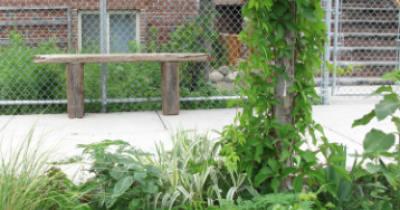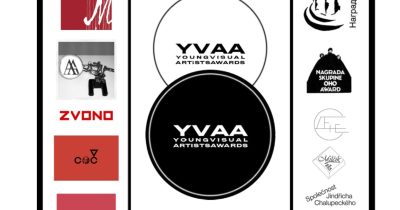TABLEAU
(June 30th – August 9th)
Opening Reception: Tuesday, June 30th (7-9 pm)
artists: Daniel Spoerri, Natascha Sadr Haghighian, B. Wurtz, Josh Tonsfeldt, Trevor Shimizu, Pedro Wirz, Fabian Drung, Gelitin, Margaret Lee, Rainer Ganahl, Heike-Karin Föll, David Adamo, Robert Mapplethorpe, Marcel Duchamp
In 1960, the philosopher, critic and curator Pierre Restany presented his “Nouveau Réalisme” manifesto at Yves Klein’s workshop in France. This manifesto consisted of nine signatures and just one sentence: “Nouveau Réalisme – nouvelle approches perspectives du réel.” Joining the names of Klein, Martial Raysse, Arman and Jean Tinguely, was Daniel Spoerri, who often described his food arrangements as “Tableau.”
The works in the first group show at Kai Matsumiya similarly encourage “new ways of perceiving the real” via the process of alimentation. Spoerri’s mounted sculpture, co-signed with Claude Torey, pairs an exotic metal kitchen tool alongside the remains of a dead and flattened hedgehog. These items literally illustrate the French and Italian definition of “still life,” nature morte: dead nature.
The 19th century framework for addressing nature, land and land use in the era of classical still-life painting is the aesthetic point of departure for Natascha Sadr Haghighian’s video, filmed at a Whole Foods market. Haghighian discusses the Diggers Manifesto (1649) about land labor rights within the prepared foods section, a corporate-curated pageant of fine food, cuisine art and display. Brent Owens’s fast food sculptures are realistically crafted out of basic flammable materials taken from nature and human debris, but also incorporate elements of the absurd, such as when a fingertip unexpectedly juts out from a sandwich. The objects are presented with a neon backlight made also out of wood. Josh Tonsfeldt jams cherry pits between glass panels to capture traces of usage and reorder the conventional composition of a framed image. Trevor Shimizu offers a painting titled “Spaghetti and Shit Balls,” evoking “Lady and the Tramp,” but with a brown-brushstroke digestive twist within a very romantic setting.
Pedro Wirz’s sunny-side-up egg made of polyester on a hot stone invites a discussion about art historical calorie counting while raising questions about global warming. Fabian Drung’s film shows the artist pushing through a crowded German streetcar offering expensive chocolate bars to commuters, most of whom are too fixated on their handheld devices to care. Gelitin’s composition in a box of a Stella Artois beer bottle and its “copied” double is the result of the gigantic copy machine, the TANTAMOUNTER, as it most generously worked 24/7 in New York (2005). Locked into the transformative belly of this machine, the artists duplicated anything that could fit inside of it. Gelitin further authorized these duplicates with certificates of authenticity, which guaranteed a food item’s expiration date into infinity.
The sausage-like images in Margaret Lee’s ambivalent watercolors hint at sadomasochistic tendencies, and ask us: Don’t we all binge eat sometimes? Even vegetarians will enjoy the phallic renderings of shackled-up meat. Rainer Ganahlabuses food as a means of addressing recent economic events, such as the collapse of the world financial architecture in 2008, the year which unleashed immutable social, political, and economic repurcussions, especially in light of the developments in Greece today. The nomenclature of these economic injustices are inscribed into Ganahl’s obscene food sculptures, as arranged in his Neo-Dadaist banquets.
Heike-Karin Föll’s ad-hoc arrangements with fresh flowers elaborate on the classical themes of the ephemeral pleasures depicted in historical Dutch and Flemish paintings of that genre. The concept for each bouquest is given to a florist to interpret according to the prices of flowers available on the market. A list of the flowers forms the basis of the work so that the floral sculpture can be rearranged in the future. David Adamo adds a more tangential, socio-political dimension with his two works in the show: a group of tomatoes cast in bronze and a bouquet of flowers bundled around two baseball bats. Wrapping these with aluminum foil, he alludes to the often double-bind constellations one so often finds in stereotypical family settings, while hinting at potentially opposing solutions.
In the days before vacuum-sealed food, newspapers played a role not only in post-breakfast unwinding while reading, but also in packaging. In Robert Mapplethorpe’s photograph “fish,” a scaly swimmer lies dead on a newspaper, recasting the historical vanitas subject of the 16th and 17th centuries. This work, like so many of Mapplethorpe’s neo-classicist photographs, cannot be read without acknowledging the ravages of the AIDS crisis. Akin to classical nature morte genres, the artist projected the substance of life and death into a dance of proximity which is both sublime and awful, filled with desire, love and affection turned lethal and withering.
The oldest work in the show is a bronze sculpture by Marcel Duchamp, “Bouch Évier” (1964) which is functionally translated as a “sink stopper,” but verbally as “sink mouth.” The Philadelphia Museum has described it as an “enigmatic molded item in bronze (that) alludes to human anatomy.“ During the course of the exhibition, this “mouth piece” at Kai Matsumiya will be situated near the place from which it originally came: the sink.
Kai Matsumiya
153 1/2 Stanton Street
New York, New York 10002
www.kaimatsumiya.com
info@kaimatsumiya.com




